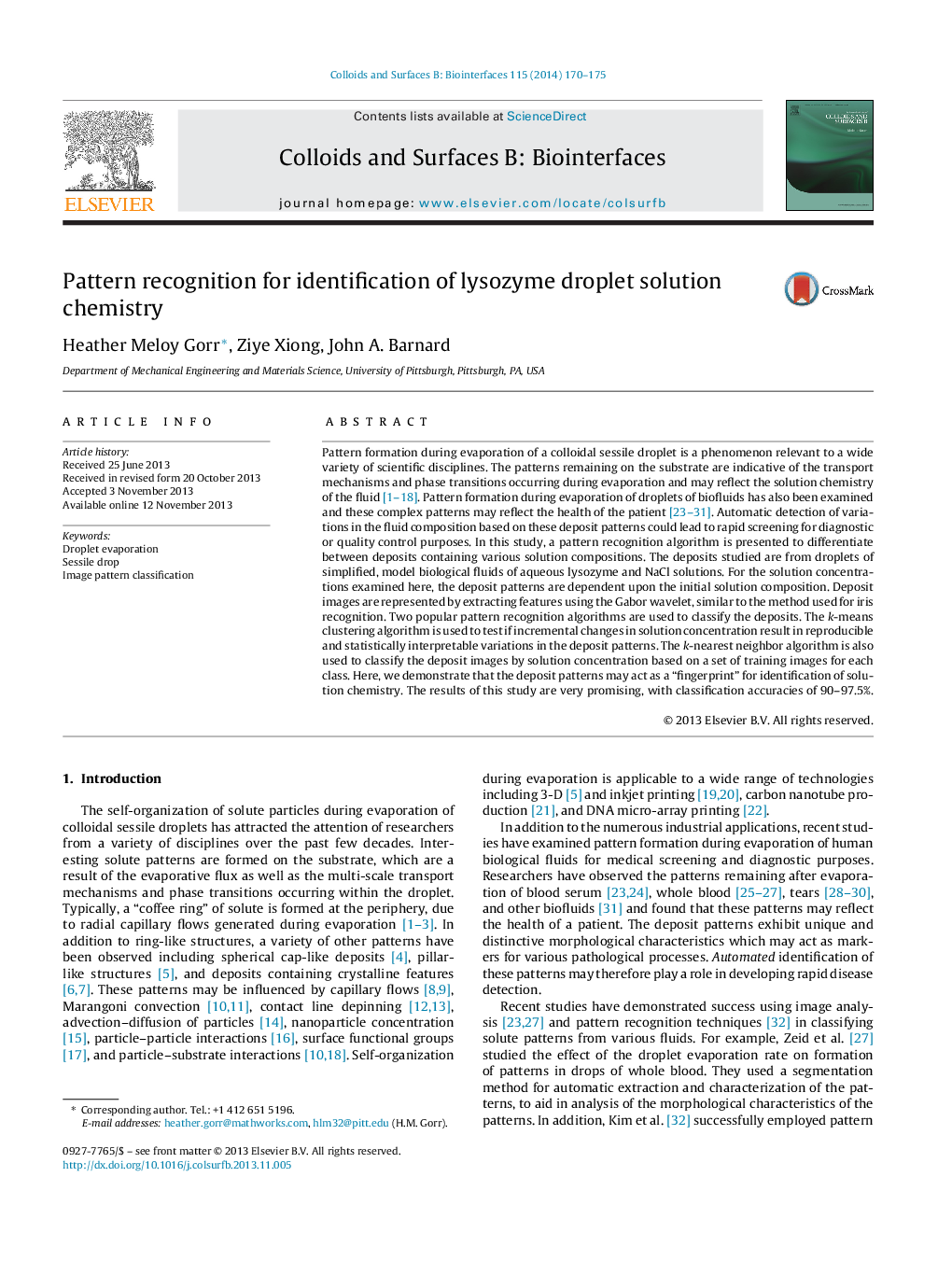| کد مقاله | کد نشریه | سال انتشار | مقاله انگلیسی | نسخه تمام متن |
|---|---|---|---|---|
| 599725 | 1454289 | 2014 | 6 صفحه PDF | دانلود رایگان |
• Images of deposit patterns formed during evaporation of aqueous lysozyme and NaCl solution droplets are classified.
• Machine learning techniques are successfully employed to classify droplet deposits based on initial solution chemistry.
• These deposit patterns may act as a “fingerprint” for identification of solution chemistry.
Pattern formation during evaporation of a colloidal sessile droplet is a phenomenon relevant to a wide variety of scientific disciplines. The patterns remaining on the substrate are indicative of the transport mechanisms and phase transitions occurring during evaporation and may reflect the solution chemistry of the fluid [1], [2], [3], [4], [5], [6], [7], [8], [9], [10], [11], [12], [13], [14], [15], [16], [17] and [18]. Pattern formation during evaporation of droplets of biofluids has also been examined and these complex patterns may reflect the health of the patient [23], [24], [25], [26], [27], [28], [29], [30] and [31]. Automatic detection of variations in the fluid composition based on these deposit patterns could lead to rapid screening for diagnostic or quality control purposes. In this study, a pattern recognition algorithm is presented to differentiate between deposits containing various solution compositions. The deposits studied are from droplets of simplified, model biological fluids of aqueous lysozyme and NaCl solutions. For the solution concentrations examined here, the deposit patterns are dependent upon the initial solution composition. Deposit images are represented by extracting features using the Gabor wavelet, similar to the method used for iris recognition. Two popular pattern recognition algorithms are used to classify the deposits. The k-means clustering algorithm is used to test if incremental changes in solution concentration result in reproducible and statistically interpretable variations in the deposit patterns. The k-nearest neighbor algorithm is also used to classify the deposit images by solution concentration based on a set of training images for each class. Here, we demonstrate that the deposit patterns may act as a “fingerprint” for identification of solution chemistry. The results of this study are very promising, with classification accuracies of 90–97.5%.
Representative deposits (D ∼ 100 μm) used for classification of evaporated droplets containing 1.00 wt% lysozyme and NaCl in concentrations of φN = 0, 0.10, 0.50, and 1.00 wt%.Figure optionsDownload as PowerPoint slide
Journal: Colloids and Surfaces B: Biointerfaces - Volume 115, 1 March 2014, Pages 170–175
